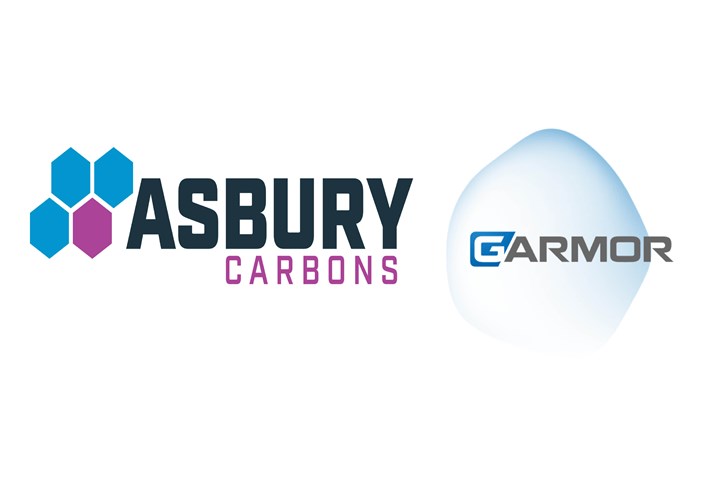Asbury Carbons pivots in the graphene industry, acquires Garmor Inc.
Florida-based advanced materials company will advance Asbury Carbon’s engineered material solutions for products such as adhesives and metal-matrix composites (MMC).

Asbury Carbons Inc. (Asbury, N.J., U.S.), A global processor of carbon and graphite materials, announced on July 6 that it has acquired Garmor Inc. (Orlando, Fla., U.S.), an advanced materials company with a patented, environmentally friendly process for the commercial production of edge functionalized graphene (EFG). This process involves attaching chemical moieties to the edge of graphene sheets to impart solubility, film-forming capability and electrocatalytic activity without altering the physical chemistry of the graphene. It can be used to improve coatings, adhesives, sealants, elastomers and polymers.
In line with its strategy of growth through diversification, the acquisition of Garmor Inc. will reportedly enhance Asbury’s portfolio of engineered material solutions for adhesives, asphalt, cement, coatings as well as plastic and metal-matrix composites (MMC).
“From our first interactions with the team from Asbury, we knew that we had found a partner that had a passion around innovation and a shared vision around the potential of graphene and industrial applications,” notes Anastasia Canavan, president and CEO of Garmor Inc. “We truly believe that this is a perfect fit between the capabilities, scale and operational excellence of Asbury and the innovation, creativity and specialization of Garmor.”
According to Garmor’s CTO, Jeff Bullington, Garmor has several large-scale
industrial customers with graphene-enhanced products already on the market and a substantial developing pipe-line in CASE, plastics and ceramics on the immediate horizon. “Asbury’s considerable expertise as a supplier into these markets greatly enables Garmor’s ability to effectively scale production to exploit these and other opportunities,” Bullington says.
Related Content
-
The making of carbon fiber
A look at the process by which precursor becomes carbon fiber through a careful (and mostly proprietary) manipulation of temperature and tension.
-
Materials & Processes: Tooling for composites
Composite parts are formed in molds, also known as tools. Tools can be made from virtually any material. The material type, shape and complexity depend upon the part and length of production run. Here's a short summary of the issues involved in electing and making tools.
-
XlynX Materials introduces PFAS-free BondLynx molecular adhesive
Improved version of BondLynx eliminates fluorine for a more sustainable adhesive option, while still outperforming conventional adhesive bonding strength.













